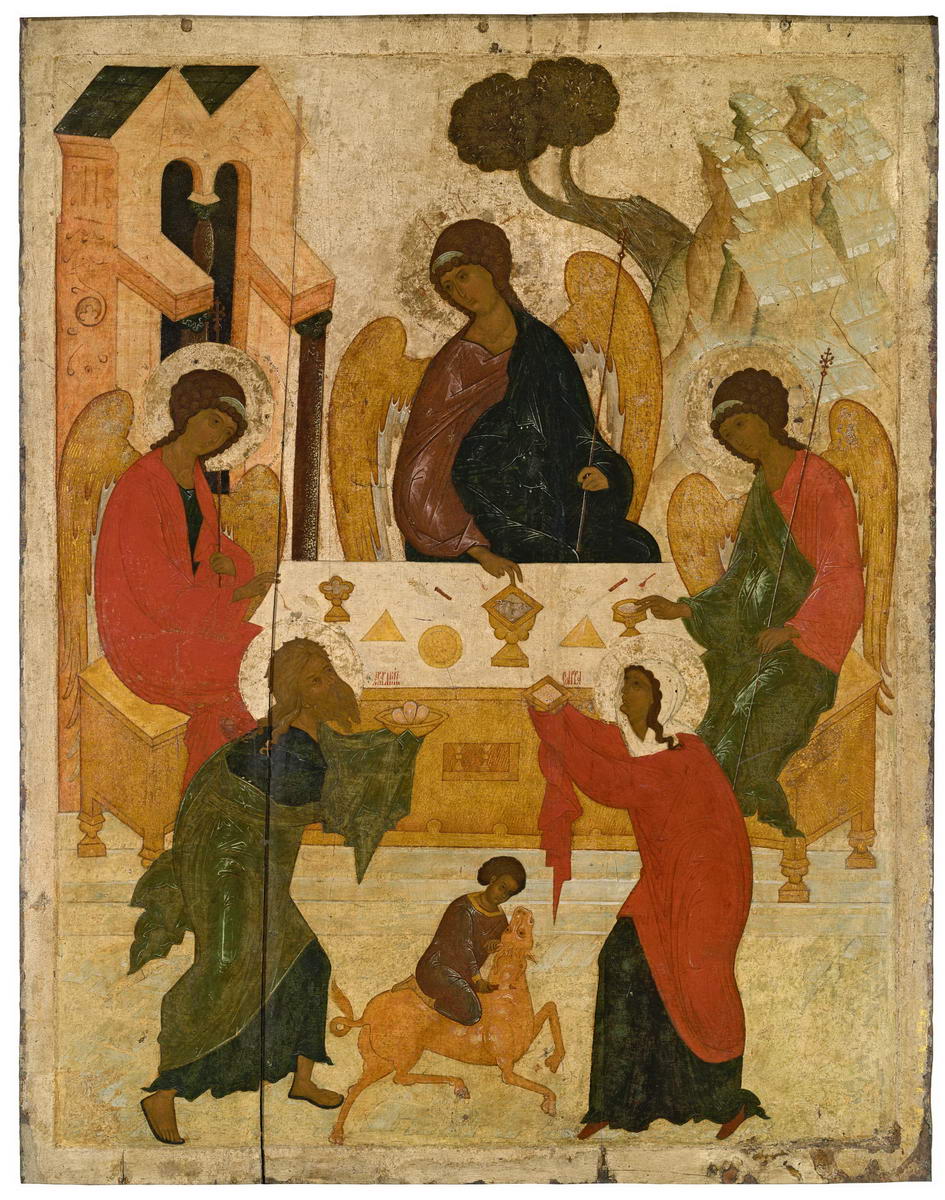


Богословская мысль рассматривала трапезу трех ангелов и гостеприимство Авраама как прообраз евангельской Тайной вечери и установления на ней таинства Евхаристии. Эпизод истолковывался как доказательство триединства Бога. Ангелы на иконе расположены в порядке Символа веры слева направо: «Верую в Бога Отца, Сына и Духа Святаго»: об этом свидетельствует крестчатый нимб среднего из Них. Реалии библейского повествования, изображенные на фоне иконы, в то же время являются емкими христианскими символами. Осеняющие Бога Отца палаты — символ Его Премудрости и Божественного домостроительства, дуб над головой Христа — Древо жизни, символ Его воскресения, гора над Святым Духом — символ «восхищения духа». Круговая композиция, которой подчинено все изображение, более всего соответствует богословско-философской сущности Троицы, Ее безначальности и бесконечности, в то же время она напоминает о круговом вращении литургического времени. Ей же вторит колористическая гармония иконы, образующая круг цветового спектра. Художественные приемы мастера выдают его принадлежность новгородской живописной традиции. Русский музей. От иконы до современности. СПб. 2015. С. 52.
 АНДРЕЙ РУБЛЁВ. "Троица". Библейский сюжет (студия "Неофит")
АНДРЕЙ РУБЛЁВ. "Троица". Библейский сюжет (студия "Неофит")

Christian theology interprets the meal of the three angels and the hospitality of Abraham as a prototype of the Last Supper and the establishment of the sacrament of the Eucharist. The episode is also regarded as proof of the Triune God. The positions of the angels on the icon, from left to right, follow the order of the Confession of Faith: «I believe in God the Father, the Son and the Holy Ghost.” The crossed halo above the central figure indicates Jesus Christ. The biblical narrative illustrated on the background of the icon is also filled with Christian symbolism. The edifices shading God the Father represent His wisdom and divine house-building. The oak above the head of Christ is also the Tree of Life and a symbol of His Resurrection. The hill above the Holy Ghost symbolises the transport of the spirit. The entire re presentation is subordinated to the circular composition, in correspondence with the theological essence of the Trinity, which has no beginning and no end. The composition also recalls the circular nature of the liturgical calendar, reiterated by the colour harmony of the icon, which forms a circular colour spectrum. The regulated composition, faithful drawing, symmetrical alternation of different paints, abundance of smooth round lines and the elevated and decorative flair of the rhythmic forms and colours lend the work an expressive and festive air. These artistic devices reflect the traditions of Novgorod icon-painting. Russian Museum: From Icons to the Modern Times. Palace Editions, St Petersburg, 2015. P. 52.



